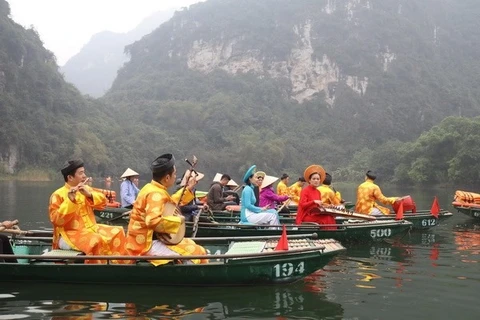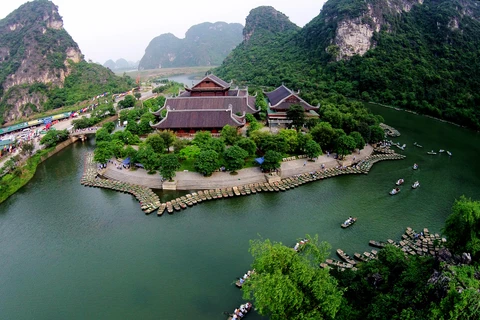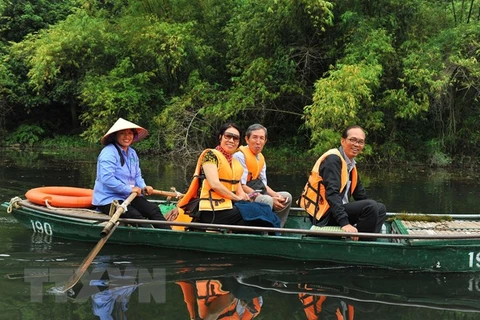Ninh Binh (VNA) – Leaders of Ninh Binh province, UNESCO experts, researchers and scientists on May 23 joined a conference to examine the conservation of Trang An scenic landscape complex in the northern province, which was recognised by UNESCO as a Cultural and Natural World Heritage Site in 2014.
In UNESCO's words, "Trang An is a resplendent complex of limestone karst peaks which are permeated with valleys, including submerged ones, and surrounded by steep, almost vertical cliffs," nestling on the southern shore of the Red River Delta. Archaeological traces of human activity dating back thousands of years have also been found within the complex.
Spanning 12,252 hectares across five local districts, the Trang An Complex boasts several nationally recognised sites like the Trang An ecotourism site and Hoa Lu, Vietnam's capital in the 10th and 11th centuries. The area also has many other temples, pagodas, paddy fields, villages and other sacred sites.
At the conference, participants praised Ninh Binh’s preservation and promotion of the site. The province has so far worked to protect the complex via developing tourism in a sustainable and responsible manner.
The provincial Tourism Department said it will continue following State regulations and UNESCO recommendations regarding heritage conservation.
Organising communications campaigns to raise awareness of residents living around the site and keeping a close contact with the UNESCO and its offices in Vietnam for frequent information exchange are also necessary, it added.
The agency also pointed to other measures, including developing community-based and eco-tourism, and building policy to attract the involvement of domestic and international investors and organisations in conservation projects.
In 2018, the complex welcomed 6.2 million visitors, doubling that of 2014.-VNA
VNA
























